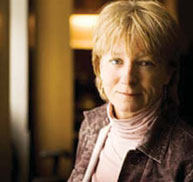
Gardeners know that a plant can flourish in one microclimate, yet flounder a few feet away. Now scientists from the Research Institute of the McGill University Health Centre (MUHC) have learned that similar microenvironments not only exist within the human body, but play a crucial role in determining whether cancer cells prosper or fade.
The MUHC team analyzed tissue from 53 breast cancer patients. Using laser capture microdissection (LCM), they separated tumour cells from their surrounding microenvironment tissue, then analyzed the gene expression evidenced in this tissue. From thousands of genes, the McGill researchers identified 163 that correlated with patient outcomes, either good (no tumour metastasis or migration) or bad (non-responsiveness to therapy). The team further identified a panel of 26 genes that could be used to accurately predict clinical outcome. This 26-gene profile, called the stromal-derived prognostic predictor (SDPP), was used to correctly forecast the outcomes in a second set of breast cancer patients.
“A tumour cannot exist on its own. It has to be supported and nourished by the cell types around it, the microenvironment,” says senior author Morag Park, Director of the molecular oncology group at the Research Institute and also the newly appointed Scientific Director of the Canadian Institutes of Health Research’s Institute of Cancer Research.
“Different patients have distinct tumour microenvironments. Our findings show that the gene profile of these distinct microenvironments can be used to determine who will fare well and who will not.” The team, which published its findings in Nature Medicine, is now developing SDPP into a functional diagnostic test, which they anticipate will be ready for clinical trials within a year.
This research was supported through the Quebec Breast Cancer Foundation, Genome Canada-Génome Québec, Valorisation-recherche Québec, the Fonds de la recherche en santé du Québec (FRSQ), the Natural Sciences and Engineering Research Council of Canada Discovery Grants Program and a Canadian Institutes of Health Research (CIHR) Team Grant.
